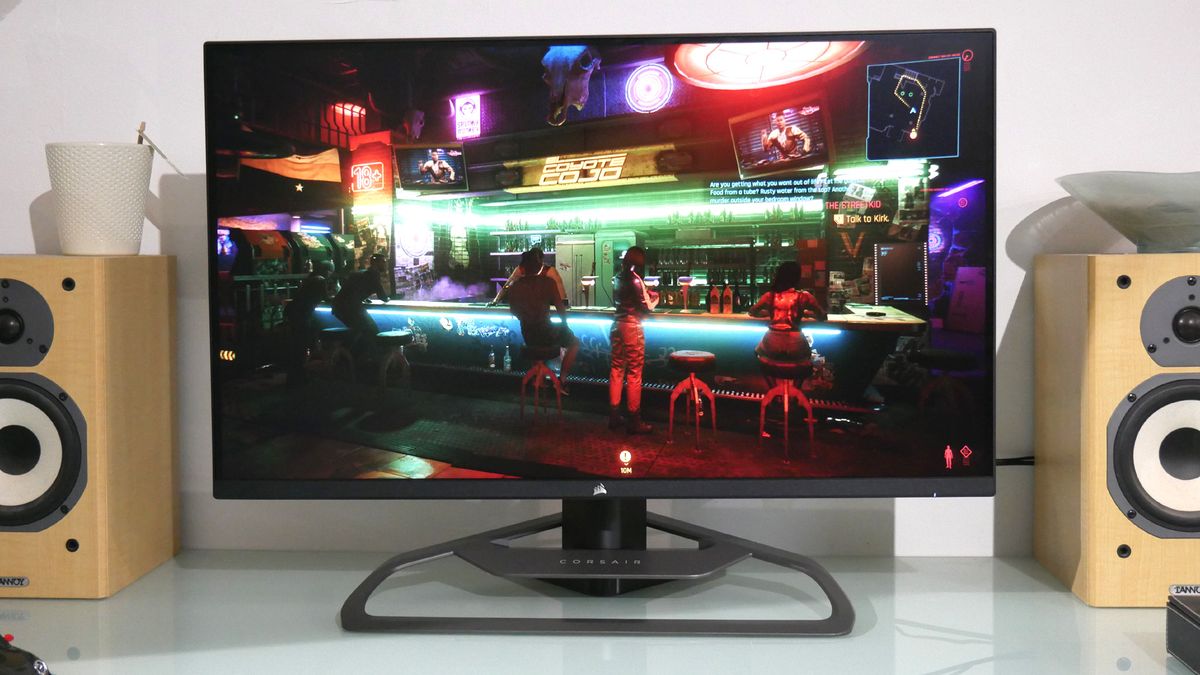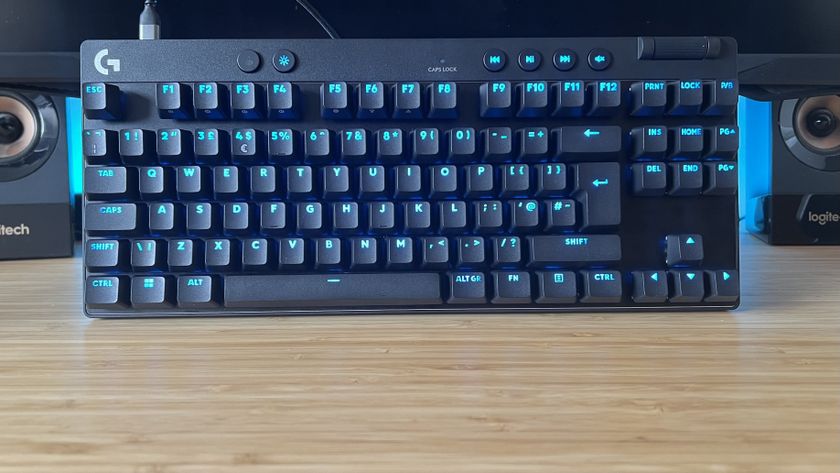12DOVE Verdict
Quality 1440p gaming at a seriously premium price.
Pros
- +
Nicely calibrated image quality
- +
Good feature set
- +
Great build quality
Cons
- -
Expensive for a 1440p panel
- -
Limited HDR performance
- -
Fast but not crazy quick
Why you can trust 12DOVE
The new Corsair Xeneon 32QHD165 goes all-in on the popular 1440p resolution sweet spot for performance PC gaming. Listing at $799 or £699, Corsair’s gaming-optimised 32-incher is painfully pricey for a 1440p panel. Yes, the likes of Gigabyte’s Aorus FI32Q occupy nearly as lofty territory, but that Gigabyte screen was already struggling to justify its positioning. So, the Corsair Xeneon 32QHD165 really has its work cut out.
At this price point, there are numerous 4K monitors for gaming to choose from. The upside of 4K is obviously more visual detail - eight million pixels' worth in fact - but the downside is more work for your graphics card. For affordable gaming, 1440p makes so much sense - especially with half-decent graphics cards currently costing crazy money.
The problem is, the more expensive the monitor, the more the implication that the owner can also afford one of the best graphic cards. Anyway, you get the idea. The initial impression is that 1440p at this price level is a stretch, both in terms of value and in the sense of stretching too few pixels over too large a panel. The Xeneon counters with a comprehensive feature set that includes high-quality engineering, high refresh, HDR support, and even USB-C connectivity with power delivery. But does it all add up to a plausible value proposition or something that will trouble best gaming monitor lists? Time to find out.
Design & Features
The Corsair Xeneon 32QHD165 is built around a quality 32-inch IPS panel with the aforementioned 1440p native resolution. To that, it adds 165Hz refresh and response rates of 1ms MPRT and sub-3ms gray-to-gray. Not bad, but arguably nothing special given the quickest 1440p IPS panels now clock in at 240Hz and 1ms gray-to-gray.
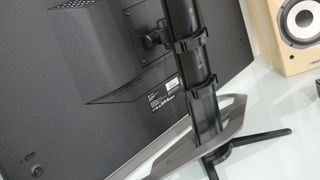
You could say the same about the Xeneon’s HDR support. It’s a VESA DisplayHDR 400 certified panel with a peak brightness of 440 nits, which is entry-level when it comes to HDR performance. Notably, there’s no local dimming and the panel is rated at a relatively ordinary 1,000:1 for static contrast.
More impressive is the claimed 98 per cent coverage of the DCI-P3 colour space, making this a very accurate panel, especially for a gaming-centric model. It’s likely a consequence of the use of quantum dot tech, which boosts the quality of the Xeneon’s LED backlight.
As for inputs, the predictable bit involves two HDMI 2.0 ports and a single DisplayPort 1.4 socket interface. More novel is the USB Type-C interface with power delivery for single-cable connectivity, allowing a laptop to drive the display and charge at the same time. The snag is that charging power is limited to a mere 15W - barely adequate for an ultraportable laptop let alone one designed for gaming.
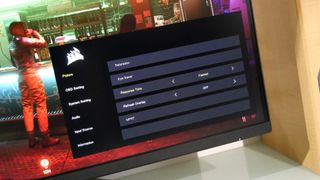
Incidentally, as the ‘2.0’ spec implies, the HDMI ports are limited to 144Hz. It’s not a huge limitation compared to the maximum 165Hz refresh rate and in any case, the ports are really there for supporting non-PC devices like consoles. As it happens, the Xeneon sports a special “console mode” which accepts a 4K input and downscales that to 1440p.
That’s handy, most obviously for those looking to potentially deploy this as a PS5 monitor - considering the PS5 currently doesn’t support 1440p - or Xbox Series X monitor. Whether it truly makes sense is another matter. Forcing a console to render a heavy 4K load only to downscale that output to 1440p isn’t exactly optimal. Especially as you can bag one of the best 120Hz 4K TVs for not all that much more money.
Rounding out the speeds and feeds are AMD FreeSync Premium certification and NVIDIA G-Sync Compatibility (potentially making this a top G-Sync compatible FreeSync monitor), plus support for Corsair’s iCue software. The Corsair Xeneon 32QHD165 is also notable for the particularly high quality of its physical engineering. The die-cast aluminium stand is a serious piece of work and the height and tilt-adjustable chassis feels very nicely put together.
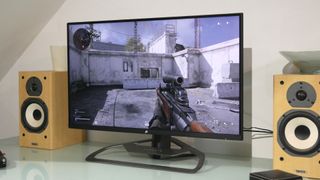
Performance
Out of the box, the Corsair Xeneon 32QHD165 makes a strong first impression. It’s vibrant, punchy, and clearly very well calibrated with accurate and natural colours. It’s also quick. Admittedly, a whiff of overshoot is visible if you crank the user-configurable pixel overdrive up to its fastest setting, but dial it back a notch and the result is pixel response that should please most gamers - even if serious esports fans will want to seek out a panel with a true 1ms GtG response, rather than the Xeneon’s 1ms MPRT performance.
That caveat aside, this is a very versatile gaming monitor. It’ll do the trigger-happy thing in Apex Legends, Fortnite et al just fine thanks to decent response and no discernible latency. It’s also big, bold, and bright enough to do reasonable justice to more graphics-lead games like Cyberpunk 2077 or arcadey driving sims including the Forza series, albeit it doesn’t offer a true HDR experience. As for strategy gaming, 1440p gives adequate detail while the 32-inch panel size provides decent space for menus and other screen furniture.
If there is an obvious downside it’s pixel density. 1440p on a 27-inch panel works well for most kinds of gaming. 1440p on a larger 32-inch panel is slightly less convincing. Yes, it’s a big step up from 1080p, but it’s also nowhere near the clarity and detail of 4K.
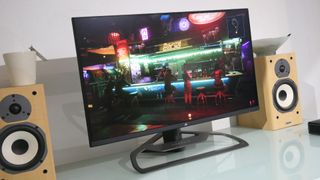
There’s the trade-off with performance to consider, of course. You need one heck of a GPU to achieve good frame rates at 4K in modern games. But then this is a very expensive monitor. What’s more, where the pros and cons of 4K versus 1440p on this size of panel are debatable in-game, if you’re planning on using this monitor as a general-purpose display in Windows as well as for gaming, the pixel density issue will only be more obvious. 4K looks so much nicer on the desktop.
Overall - should you buy it?
The Corsair Xeneon 32QHD165 is a strong all-rounder. It offers nicely calibrated core image quality, decent response, low latency, and decent connectivity. It’ll turn its hand to almost any kind of gaming, be that different gaming genres or device types from PC to console. But it doesn’t absolutely excel in any area.
It’s not particularly high resolution and the 1440p native stretched across a 32-inch panel makes for relatively low pixel density at this price point. Likewise, the HDR implementation is very basic. The USB-C interface’s power delivery limitation of just 15W is also a little disappointing. All told, the Corsair Xeneon 32QHD165 is a very nice monitor but it simply costs too much money at it's list price.
And don't forget: it's that time of year again so prepare for the upcoming Black Friday gaming monitor deals.
A serious dissertation on the finer points of input lag and overshoot followed by a forensic examination of AI-accelerated temporal upscaling. Such is a routine day in the working life of long-time tech wordsmith, Jeremy Laird. Along with GamesRadar, Jeremy’s 15-year back catalogue includes a host of tech and gaming outlets, including TechRadar and PC Gamer, not to mention contributions to mainstream media from the Independent to the Evening Standard. Complimenting Jeremy’s debilitating addiction to all kinds of digital hardware, he is also afflicted by an obsession with and a significant occupational sideline in cars and automotive technology.
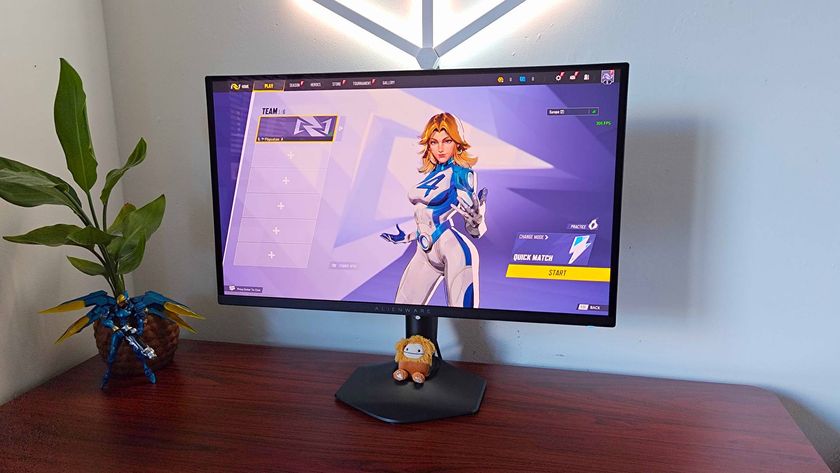
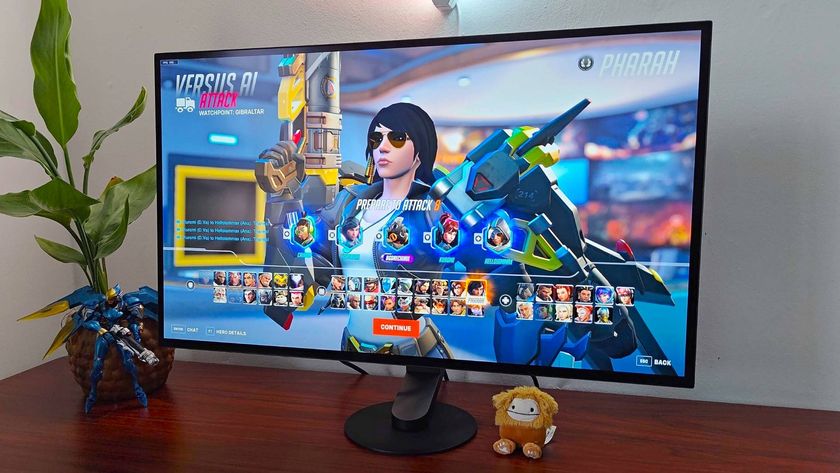
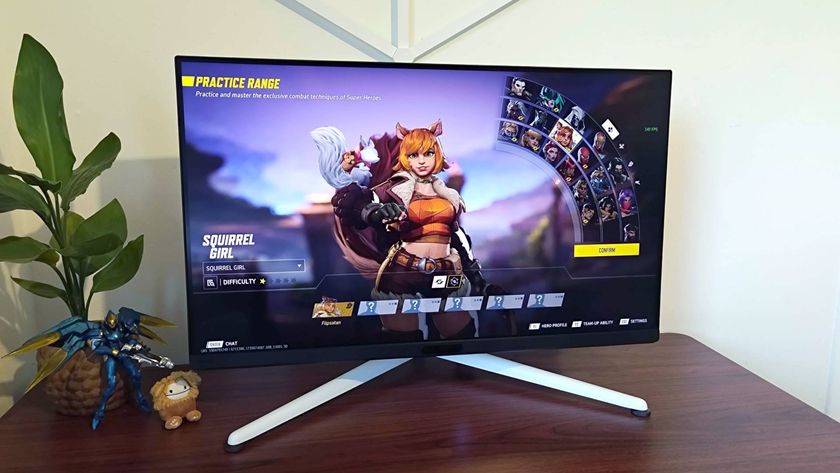
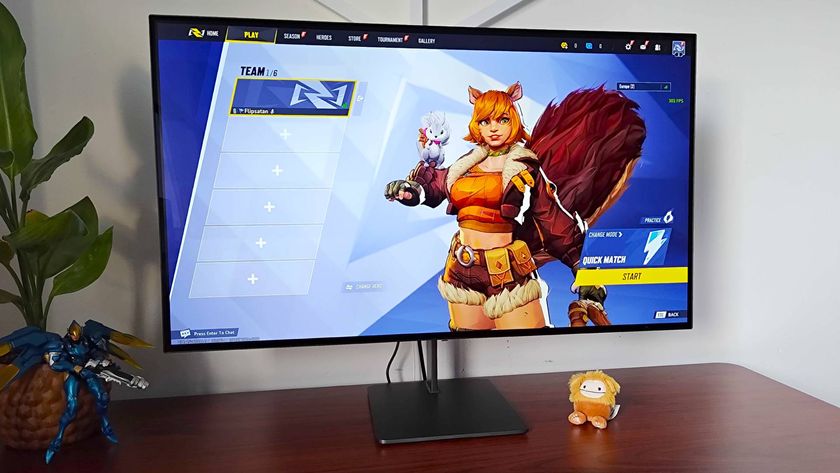
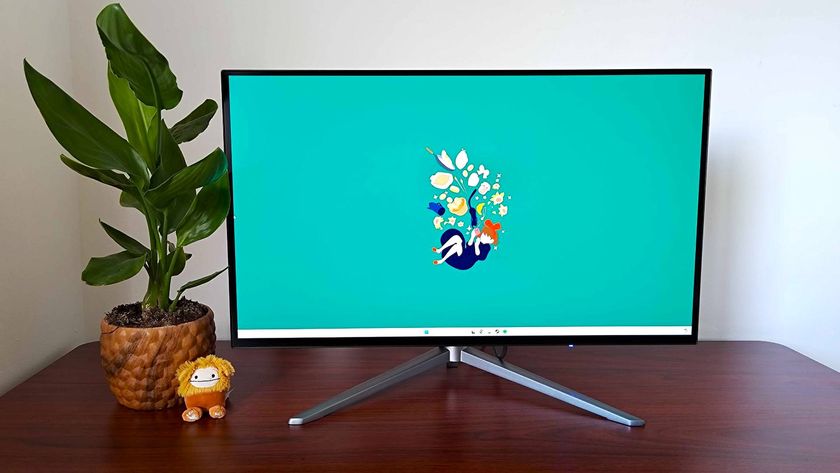
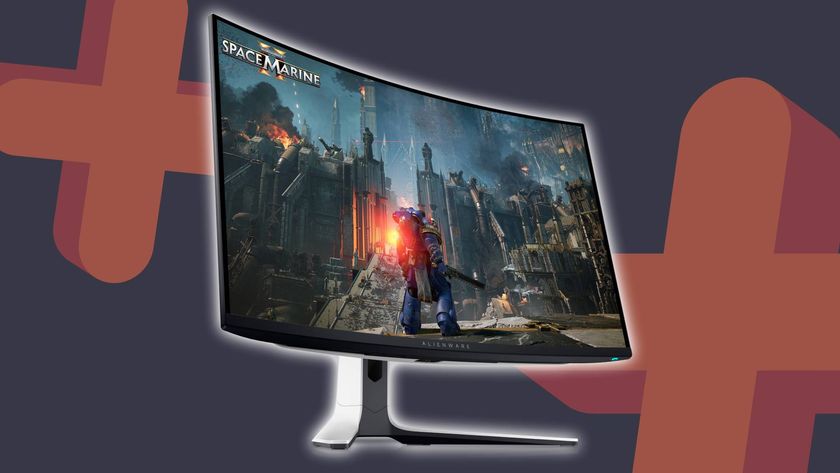

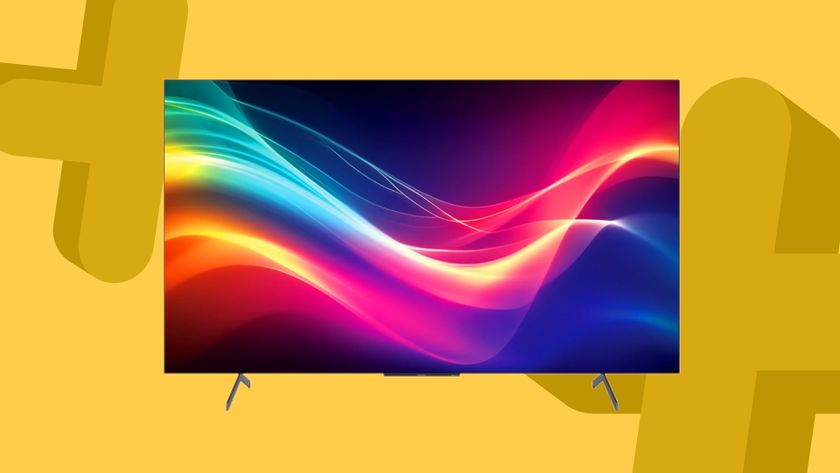
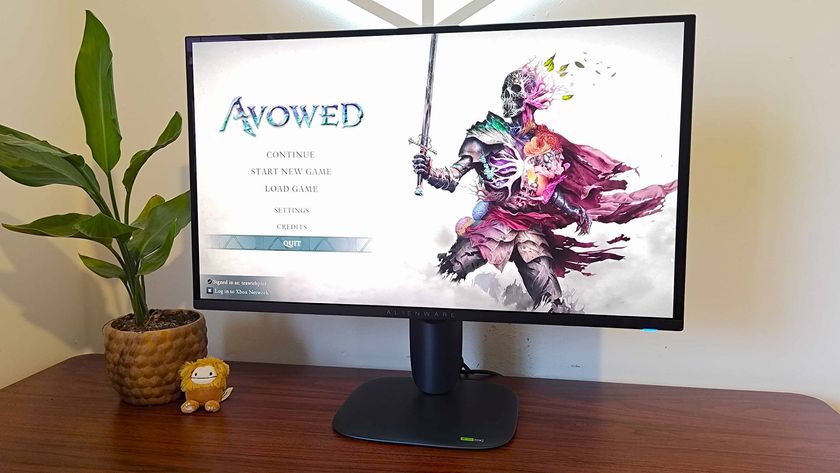

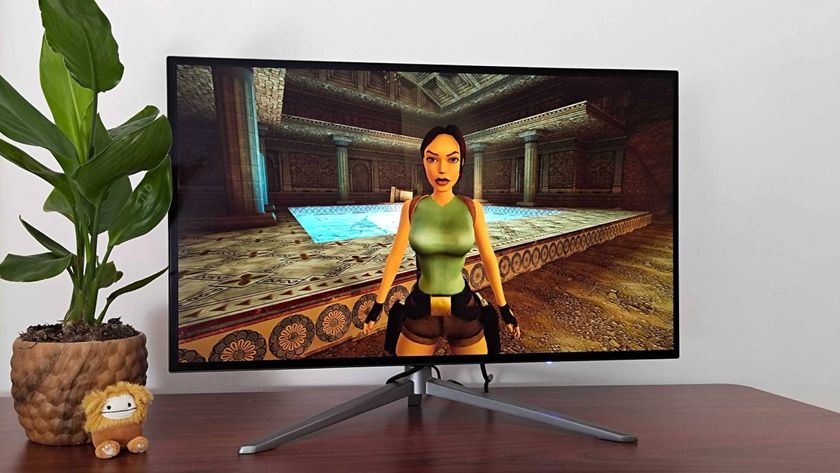

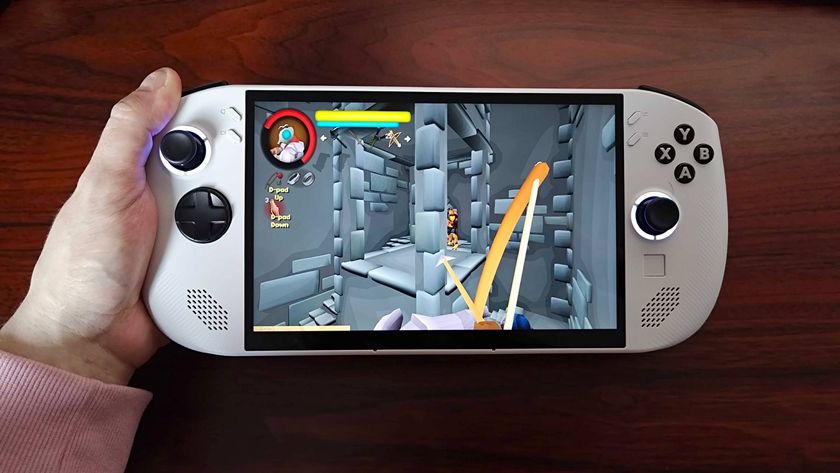



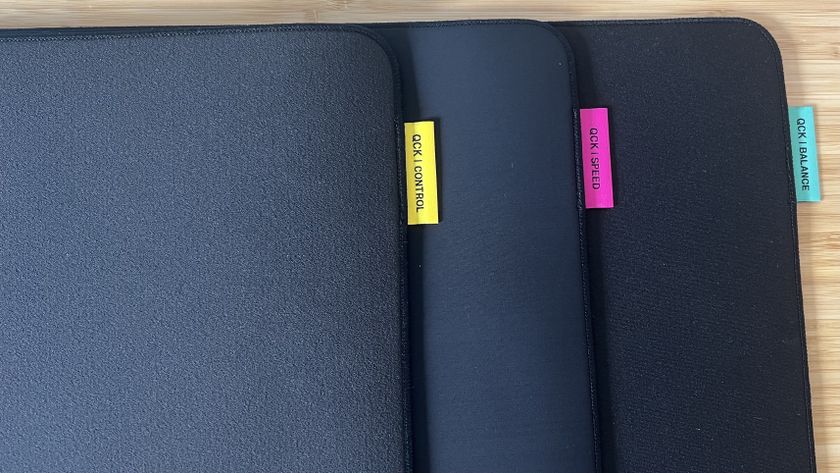


Who killed [SPOILER] in Daredevil: Born Again episode 3?

The creator of upcoming life sim Inzoi says he was "recklessly brave to even think about creating a game of this scale"

A year after its PS5 launch, Rise of the Ronin debuts on PC to "Mixed" reviews and performance complaints: "Stuttering on a 4090 is just... no"
